-
12 Days
-
Private
-
Every Day
Description
Egypt where the civilizations were begun
| Program | Egypt Classic Tour Packages 12 days tour Goddess Wajet |
| Duration: | 11 nights / 12 days |
| Destinations covered: | Cairo » Aswan » Nile Cruise » Luxor » Alexandria » Cairo |
(07 nights in Cairo » 03 Nights Nile Cruise» 01 night in Luxor)
Extraordinary 12 Days Egypt Tour Goddess Wajet
Change your life routine for 12 days Egypt tour on Cairo, Alexandria & Nile cruise, enjoy the ancient temples and tombs in Upper Egypt such as Karnak, Hatshepsut, Valley of the Kings, and other historical monuments, as well as the Pyramids, Islamic and Coptic sightseeing in Cairo. Embark on a tour through Alexandria’s beautiful sights where you will visit Qaitbay Citadel, Pompey’s Pillar, and Alexandria Library. Our 12 days Egypt tour is the perfect vacation for those who love to have an adventure in Egypt, so don’t miss the chance and book us now.
Experience Egypt and feel like royalty only with Khaled Abbass Tour Guide
Itinerary
Your tour manager will meet and assist you at Cairo International Airport and then he will escort you to the hotel by exclusive air-conditioned deluxe vehicle. At the hotel, the tour manager will assist with a smooth check-in and review your holiday itinerary with you to establish and confirm pick-up times for each tour. Overnight in Cairo.
Discover the history of pharaohs through an amazing tour that suits your needs, at the morning time we will take you from the hotel in Cairo by a private air-conditioned car to start a day trip from Cairo to Pyramids, the Museum, and Khan El Khalili starting with:
The Step Pyramid of Saqqara
It’s called also step Pyramid of Zoser or Josser, due to the King Zoser who ordered his minister Imhotep to build it, this pyramid consists of six-layers, It’s height was about 197foot (60 meters). It is the first Pyramid ever built and it is the first largest scale stone building in the world.
Pyramid of Unas
The Pyramid of Unas is a smooth-sided pyramid built in the 24th century BC for the Egyptian pharaoh Unas, the ninth and final king of the Fifth Dynasty.
Pyramid Complex of Teti
Teti (c.2345–2323 BC), the first ruler of the Sixth Dynasty, built his pyramidal complex not far from the Step Pyramid of (c.2667–2648 BC), in Saqqara. Upon completion, it stood 52.5 m tall.
The mastaba tomb of Kagemni also known as Memi
The mastaba was discovered in 1843 by Richard Lepsius. It had to wait until 1905 before von Bissing would begin his publication of rooms IV to VIII, which wasn't completed until 1911.
The mastaba of Nikauisesi
The mastaba of Nikauisesi is situated in the north-east sector of the necropolis of Saqqara. The tomb was discovered in 1979
The mastaba of Ankhmahor
The mastaba of Ankhmahor is situated on the northern side of Teti’s pyramid at Saqqara in the block of tombs belonging to the officials of the king’s Dynasty VI reign.
Memphis Open Air Museum
Memphis was the oldest capital of ancient Egypt, the first one that was founded after the unification of upper and Lower Egypt. The city was founded in the first dynasty (3100 BC).
At the end of this great day we will enjoy lunch in one of the best resturants that looks over the Pyramids and then we will go back to our hotel and over night in Cairo.
Overnight in Cairo
Meals: Breakfast & Lunch
It is said that Egypt is full of Pyramids and after breakfast you will get the opportunity to visit 2 more of them. You will be taken, in an air-conditioned vehicle, to Dashur where you will see the two pyramids built by the Pharaoh Snefru.
The Red Pyramid
The Red Pyramid was another project of the 4th Dynasty pharaoh Sneferu. After the completion of the Bent Pyramid, which also stand nearby in the Necropolis at Dahshur, Sneferu set out to correct the mistakes that were made in the construction of his that pyramid and the one at Meidum that collapsed during construction.
The Bent Pyramid
The Bent Pyramid is called a ‘transitional’ pyramid because the angle of its sides changes abruptly approximately one-third of the way up. Archeologists attribute this to an engineering crisis during construction.
The Grand Egyptian Museum
It has been announced that the GEM, which is home to the largest collection of Egyptian antiquities worldwide, will open in 2024. However, the museum's Great Hall and Grand Staircase, where the colossal statues are on display, are already accessible to the public. The museum is now partially open to receive limited group visits, and to hold some special events.
Overnight in Cairo
Meals: Breakfast & Lunch
After breakfast at your hotel we will meet in the lobby and start our unique day tour to the Pyramids of Giza
Giza Pyramids Complex
The three main pyramids of Giza (Khufu, Khafre, and Menkaure) are sufficient enough to build a 2-meter-long wall and span 100,000 square kilometers around the globe along with the equator.
The Great Pyramid
The Great Pyramid of King Khufu is considered largely represents the spirit of ancient Egypt, King Khufu who built this Pyramid as a cemetery has left little information about his reign. Khufu ruled for about twenty-four years. Ironically, despite the enormity of his pyramid, the only statue of King Khufu himself is really small statue carved from ivory
Camel Ride
During our visit to the Pyramids, you will experience the transportation of the ancient and will enjoy a camel ride for almost 01 hour to get the best shots around the pyramids you just need to prepare your camera. We will move from the highest point at the Pyramids till we reach the lowest where the Sphinx is located as ancient pharaohs did.
The Magical Sphinx
Who among us when mentioning the name of the Sphinx does not think about this stone sculpture that carved in the form of the human head and lion body, which is located in the Giza plateau in Egypt the Sphinx is one of the oldest and the largest sculptures in the world, it’s about 73.5 meters long and 6 meters wide.
There have been many and different opinions about the symbol represented by the Sphinx, Old views said that it represents the wisdom of man and the strength of the lion together and these qualities were applicable to “King Khafre“.
After that, continue your day tour from Cairo to Pyramids by paying a visit to:
The Valley Temple
It was used as a place for the embalming process. This temple constructed definitely for two functions: First, it was used for the purification of the mummy before its burial. Second, it was used for making the Mummification process of the king.
Overnight in Cairo
Meals: Breakfast & Lunch
Your day starts with breakfast in your hotel followed by a 2.5-hour drive, in our air-conditioned vehicle, to Alexandria where you will visit the following.
The Catacombs of Kom Alshaqafa
The Catacombs of Alexandria are the largest and most important burial site in Egypt that has a mixture of Roman, Hellenistic, and ancient Egyptian decorative art and elements that were all common during this period in Alexandria.
The Pmpai`s Pillar
It’s a column that stands on a rocky hilltop in the middle of Alexandria. Pompey Pillar is a triumphal monument erected around 300 AD for the Roman Emperor Diocletian.
Qait Bay Citadel
Qaitbay Citadel has been built during the 14th century by (Sultan Qaitbay) to defend Alexandria from the attacks of The Ottoman Empire. You can enjoy the Sea views, wonderful restaurants, and unforgettable touristic items while visiting it.
Lunch will be served during the day tour in a sea view restaurant in Alexandria and then we will continue our tour to visit
Library of Alexandria
Alexandria Library is the most ancient library of classical antiquity. In it, you can find a copy of every book published all over the World. It’s not just a building, it’s a complex where all arts, philosophy, ancient history come together.
Finally, we will transfer you in a private air-conditioned car to back to your hotel in Cairo and overnight
Overnight in Cairo
Meals: Breakfast & Lunch
Breakfast at the hotel followed by a marvelous day tour to the Egyptian Museum and the holy part of Cairo
The Egyptian Museum
Centrally located on the edge of Tahrir Square in Cairo, the Egyptian Museum is hard to miss on any tour of Cairo. Opening in 1902, it was purpose-built to house the antiquities of Ancient Egypt. The museum was founded in 1857 by French Egyptologist August Mariette.
Coptic Cairo: Coptic Cairo is unique area with Old Cairo that has a concentration of Christian churches and other sites that date from the centuries between the decline of the pharaonic religion and the arrival of Islam when Egypt had a Christian majority. Coptic Cairo is largely built around the fort of Babylon on upon the remains of its walls.
Saint Mercurius Church
Saint Mercurius Church in Coptic Cairo is a Coptic Orthodox church situated just to the north of the Babylon Fortress in Old Cairo among a group of important churches, and within the area known as the Abu Sayfayn Cloister is to be found three churches and a convent. One of these churches, dedicated to Saint Mercurius, and is the largest in the district of ancient Babylon. The church is named after St. Philopater Mercurius who is known as Abu Sayfayn ("double sworded").
Hanging Church
The Hanging Church is named for its location above a gatehouse of Babylon Fortress, the Roman fortress in Coptic Cairo (Old Cairo); its nave is suspended over a passage. The church is approached by twenty-nine steps; early travelers to Cairo dubbed it "the Staircase Church".The land surface has risen by some six meters since the Roman period, so the Roman tower is mostly buried below ground, reducing the visual impact of the church's elevated position.
Church of the Holy Virgin (Babylon El-Darag)
The Church of the Holy Virgin in Babylon El-Darag was occupied from the 11th to the 15th centuries by several Coptic patriarchs, seven of whom were buried in the church. Pope Zacharias was one of them.
Pope Cyril VI of Alexandria used to pray in the church before assuming papacy. According to tradition, the church was one of the resting places of the Holy Family during their sojourn in Egypt, as well as the location from which Peter sent his epistle. Saints Sergius and Bacchus Church
Saints Sergius and Bacchus Church is traditionally believed to have been built on the spot where the Holy Family, Joseph, Mary and the infant Jesus Christ, rested at the end of their journey into Egypt. They may have lived here while Joseph worked at the fortress.
The church is of significant historical importance, and in fact, it is where many patriarchs of the Coptic Church were elected. The first to be elected here was Patriarch Isaac (681-692).
Moaiz ST & Khan Khaliili
Elmoaz Street the largest open-air museum for Islamic monuments in the world, and a unique heritage site that was added to The UNESCO World Heritage List in 1979. While Khan Khalili is One of the wonderful places in Cairo and the oldest market in the Middle East it’s a medieval-style mall.
Overnight in Cairo
Meals: Breakfast & Lunch
A new day starts with breakfast, and then you will be driven catch your flight to Aswan where your guide will take you to see the High Dam, the Temples of Philae, the unfinished Obelisk, check in your Nile cruise and have lunch and then visit The Nubian village and the Botanical Island. Your visit includes:
Aswan High Dam
At Aswan High Dam, you’ll hear from your tour guide the whole story of its construction and how it helped the Egyptians a lot to improve their economic and social state. Then, you’ll move to witness the miraculous:
The Unfinished Obelisk
The Unfinished Obelisk was supposed to be standing in front of Hatshepsut Temple but some cracks happened to it which leads Queen Hatshepsut to order her men to move it to Aswan and it is characterized with its majestic size.
Philae Temples
Philae Temple was constructed in 690 B.C and it had been relocated with the help of the UNESCO because it was in great danger from the High & Low Dams of Aswan. It was dedicated to goddess Isis.
After the end of the tour, you will be driven to your 5 stars Nile Cruise where you will have your lunch meal and make your check in then the rest of the day is yours. Dinner will be served onboard and overnight in Aswan.
Overnight in Nile Cruise
Meals: Breakfast & Lunch, Dinner
At the morning, enjoy your breakfast on the cruise then you will join your tour guide to the enchanting “Abu Simbel Temple” which is known to be a true piece of art. The two temples were carved out of the mountainside in 1200 BC during the reign of Pharaoh Ramesses II the second and his wife Queen Nefertari.
All the carvings, artwork, wall paintings, statues are extremely beautiful and tell incredible stories about Ramses victories at the battle of Kadesh and honor many gods like Ra, Amon, and Ptah.
Tour to Abu Simbel Temples
Abu Simbel temple complex includes 2 individual temples that were built during the reign of Pharaoh Ramses II. The great temple was built for the king himself to commemorate his coronation and his birthday and it has been built in a very impressive accurate way which makes the whole world await the Sun Festival that occurs only twice a year in the great temple of the Pharaoh to witness the miracle that occurs there. The smaller temple was built as a sign of love & appreciation from the king to his beloved queen Nefertari and she was the only wife of the king for whom he has built a temple.
Enjoy sun bathing and tea time on the deck of the Cruise. Once a shore you will visit the Temple of Kom Ombo, dedicated to the gods Horus and Sobek. After this great visit you will return back to the cruise for your dinner being served as it sails majestically towards Edfu.
The temple of Sobek in Kom Ombo
The Temple of Kom Ombo is an unusual double temple in the town of Kom Ombo in Aswan Governorate, Upper Egypt. It was constructed during the Ptolemaic dynasty, 180–47 BC. Some additions to it were later made during the Roman period. The building is unique because its 'double' design meant that there were courts, halls, sanctuaries and rooms duplicated for two sets of gods.
After the visit, you will be taken back to the boat for your dinner while it sails onward to Edfu, home of the best-preserved temple in Egypt: The Temple of Horus.
Overnight in Nile Cruise
Meals: Breakfast & Lunch, Dinner
You can enjoy an early breakfast. Once the boat is moored you will visit the best preserved temple in Egypt: the Temple of Horus. After your visit to this superb temple you will be taken back to the boat for your lunch while the cruise boat crosses the Esna lock to the city of Esna and continue sailing to Luxor.
Edfu Temple
Edfu temple which was dedicated to Horus, the son of Isis and Osiris and its walls are really impressive with its inscriptions and pictures showing Horus having his revenge from Seth the brother of his father Osiris. It is the best preserved and most complete in Egypt temple and second largest after Karnak.
After your visit to this superb temple, you will be taken back to the boat in plenty of time before it departs Edfu and sets sail for Esna. Once you reach Esna you will watch as it sails through the Esna locks. Once through the locks, the boat continues on its course towards Luxor, once the boat is moored you will visit the Temple of Luxor. Then return back to the cruise for dinner and overnight in Luxor.
The temple of Luxor
The Temple of Luxor was the center of the most important festivals and one of the best temples which you will visit. It’s one of the most important and famous ancient Egyptian temples, located in the city of Luxor, which is about 700 km from Cairo, it’s an important tourist destination for its monuments and its distinctive weather, which makes it a wonderful destination for tourists from all over the world.
After the visit, you will be taken back to the boat for your dinner while after dinner you can go out or you can rest in the cruise.
Optional Tour Sound & light show in Karnak
Enjoy Luxor Tours Watching Karnak Temple Sound and Light Show on the east bank illuminated at night with an audio-visual show that will explain how the temple was built and what life was like in Ancient Egypt. We will give you the chance to discover how life has been thousands of years ago? You will know about them through the splendid Sound and Light Show at the Karnak Temples. This spectacle will take about 75-minute first takes you around the temple grounds, and finally, the last act is played while you are seated along the Great Sacred Lake. The performance relates the history of Luxor as the capital of the ancient world.
Overnight in Nile Cruise
Meals: Breakfast & Lunch, Dinner
In the beautiful morning from your Nile Cruise in Luxor, our tour guide will meet you to take you to enjoy a journey in the west bank of Luxor where you will visit:
The Valley of the Kings
The rulers of the Eighteenth, Nineteenth, and Twentieth Dynasties of Egypt’s prosperous New Kingdom (c.1550–1069 BC) were buried in a desolate dry river valley across the river from the ancient city of Thebes (modern Luxor), hence its modern name of the Valley of the Kings. This moniker is not entirely accurate, however, since some members of the royal family aside from the king were buried here as well, as were a few non-royal, albeit very high-ranking, individuals.
The Tomb of King Tut Ankh Amun
The tomb of the Eighteenth Dynasty king Tutankhamun (c.1336–1327 BC) is world-famous because it is the only royal tomb from the Valley of the Kings that was discovered relatively intact. Its discovery in 1922 by Howard Carter made headlines worldwide, and continued to do so as the golden artifacts and other luxurious objects discovered in this tomb.
The Tomb of King Ramses VI
This tomb was begun by King Ramesses V (c.1147–1143 BC) of the Twentieth Dynasty. Although it is uncertain whether he was ultimately buried here, it is clear that his uncle Ramesses VI (c.1143–1136 BC) enlarged the tomb and used it.
The Temple of Hatshepsut
Hatshepsut (c.1473–1458 BC), the queen who became Pharaoh, built a magnificent temple at Deir al-Bahari, on the west back of Luxor. It lies directly across the Nile from Karnak Temple, the main sanctuary of the god Amun. Hatshepsut’s temple, Djeser-djeseru “the Holy of Holies” was designed by the chief steward of Amun, Senenmut.
The Colossi of Memnon
These two faceless colossi (the plural of colossus, which just means larger-than-life statue) are the first thing visitors see when they reach the west bank of the Nile opposite Luxor. This isn't surprising when you hear their dimensions: they tower 60 feet (18 m) above the plains and are estimated to weigh an enormous 720 tons each.
The Complex of Karnak Temples
Built over two millennia between the years of around 2200 and 360 BCE, Karnak is a massive Ancient Egyptian temple complex that was one of the country's most important places of worship under the rules of Hatshepsut, Seti I, Ramesses II and Ramesses III.
Lunch will be served at a high-quality restaurant then proceed driving back to your hotel in Luxor by a private A/C car
Overnight in Luxor Hotel
Meals: Breakfast, Lunch
After breakfast, you will check out and I will pick you up from your hotel in Luxor to discover the ancient sites. First, visit
Abydos
. The ancient Egyptian believed of god (Lord of the underworld) was buried there. The temple was built by King Seti I, and completed by King Ramses II, known as the temple of Seti I. It is located in Abydos city about 420 km to the south of Cairo in the Sohag Government, and 135 km from Luxor. The paintings of the Gods and Pharaohs on the walls of the Osiris Temple at Abydos are among the most beautifully preserved in Egypt. Then continue to Dendera to visit the Temple of Hathor, goddess of love and joy. The temple is located in Dendera which is situated the north of Luxor.
The Temple Of Hathor
It is located about 2.5 kilometers (1.6 mi) southeast of Dendera, Egypt. It is one of the best-preserved temple complexes in Egypt. The area was used as the sixth Nome of Upper Egypt, south of Abydos. The whole complex covers some 40,000 square meters and is surrounded by a hefty mudbrick-enclosed wall. Dendera was inhabited in prehistory, a useful oasis on the banks of the Nile. It seems that pharaoh Pepi I (ca. 2250 BC) was built on this site and evidence exists of a temple in the Eighteenth Dynasty (ca 1500 BC). The earliest extant building in the compound today is the Mammisi raised by Nectanebo II – the last of the native pharaohs (360–343 BC). After the great day tour finishes you will be driven to Luxor airport to fly back to Cairo and then transferred to your hotel in Cairo to check in and overnight in Cairo.
Meals: Breakfast, Lunch
Breakfast at the hotel. Transfer to Cairo International Airport for final departure.
Meals: Breakfast
Experience
-
Highlights
-
Day 01 Arrival To EgyptDay 02 Dahshour , Saqqara And MemphisDay 03 Pyramids Of Giza And Great SphinxDay 04 Fly From Cairo To AswanDay 05 Abu Simple TemplesDay 06 Kom Ombo - Edfu (Nile Cruise Tour)Day 07 Nile Cruise: LuxorDay 08 Denera And AbydosDay 09 Egyptian Museum – Coptic Cairo – Saladin Citadel – Khan ElkhaliliDay 10 Alexandria Tour From CairoDay 11 Day Of Leisure In CairoDay 12 Fly Back Home
-
Includes
-
Arrival / departure assistance07 nights’ accommodation in a 5-star hotel in Cairo on Bed and breakfast basis.03 nights’ accommodation in board of a 5 stars standard Nile Cruise on full board basis. (3 meals included).01 nights` accommodation in a 5-star hotel in Luxor on Bed and breakfast basis.All transfers as per program by private and deluxe air-conditioned vehicle for all transportation.Private English speaking Egyptologist guides as per the itinerary. (Any language is available).Entrance fees for all sightseeing. And all applicable taxesMeals as mentioned in the itinerary.Domestic flight ticket Cairo / Aswan / Luxor /Cairo.
-
International airfares.Egypt entry Visa.Entering inside the great Pyramid in GizaHot air balloon in LuxorAny optional toursTipping for guides, driver, Nile cruise crew, etc…Personal expenses (laundry, telephone calls, etc.
Starts from $ 3475

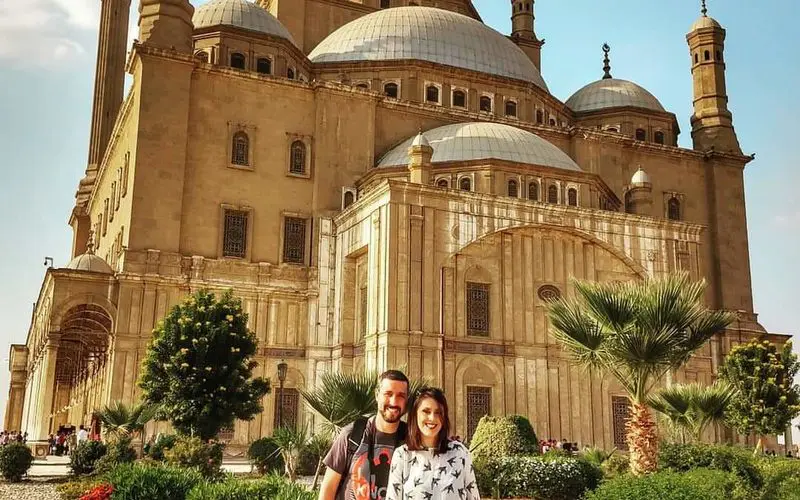
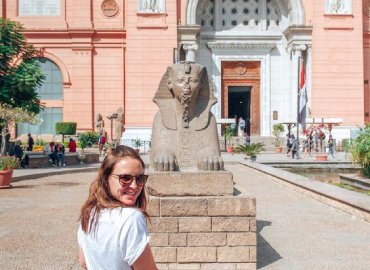


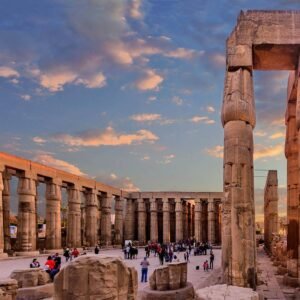
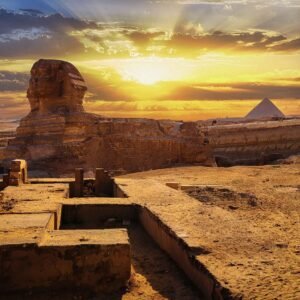
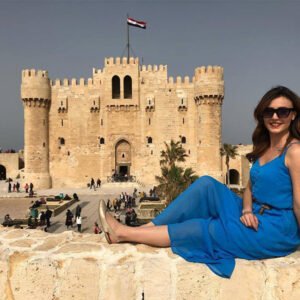

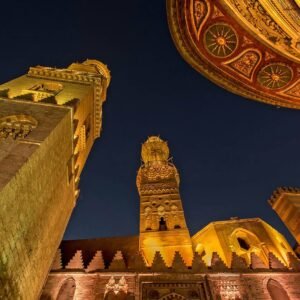

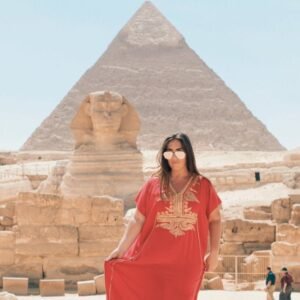

Be the first to review “Egypt Classic Tour Packages 12 days tour Goddess Wajet Cairo » Aswan »Luxor » Alexandria » Cairo”